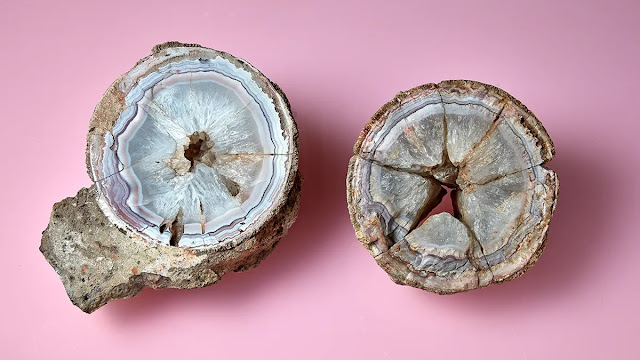Science is Fun Fridays!
Agate is a rock formation, often within volcanic and metamorphic rocks. Consisting of chalcedony and quartz, they can come in a wide variety of colors.
The above was registered to the Natural History Museum's Mineralogy Collection 175 years ago. The particular pink and white interior caught the eye of Robin Hansen, a mineral curator. The specimen was taken to a mineral show in France, where Hansen saw an agatised dinosaur egg that had many similarities...
The piece was picked up in India, and has features that are the same as Titanosaur eggs, the most common dinosaurs in the area 60 million years ago.
Hansen and the dinosaur experts now involved believe volcanic activity led to the egg being encased in volcanic rock. The internal structures would have internally decomposed, and the silica-rich water would have made its way into the egg cavity, creating the banded agate specimen.
Or, "eggate."





Comments
Post a Comment